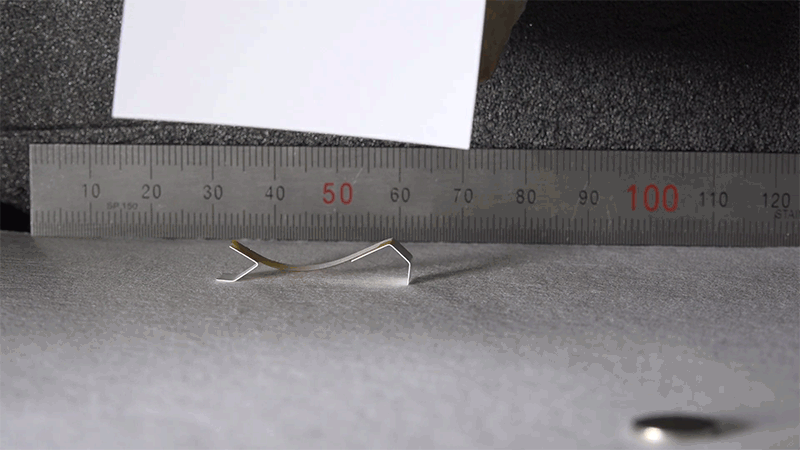BRIEF: Plant-Inspired Robots Inch Forward by Absorbing and Releasing Water

Image credits: Shin et al., Sci. Robot. 3, eaar2629 (2018)
(Inside Science) -- Researchers have created robots that wriggle forward when the humidity in the room changes or the bots are placed on a wet surface -- no batteries required. The centimeters-long “hygrobots” were inspired by plant structures such as wild wheat seeds that bury themselves by repeatedly opening in dry air and closing in wet air.
The team, from Seoul National University in South Korea, started by making a polymer material with two layers -- only one of which easily absorbs moisture from the air. In high humidity, the side that sucks in water swells, which bends the material. In dry air, the moisture is released and the material returns to its original shape.
The team devised a variety of robot shapes that translated this back-and-forth bending into straightforward motion by making it easier for the robot to move forward than back. One robot appears to slither like a snake, another to inch like an inchworm, and yet another to kick like a frog. Most of the designs required the researchers to regularly cycle the environment between wet and dry air. So, for their final demonstration, the researchers designed a robot that moves across a wet surface powered only by the natural difference in humidity between close to the surface and higher up.
This "hygrobot" looks like a table with asymmetric legs. When placed on moist filter paper, the top of the table slowly absorbs moisture from the air and curls up, dragging the rear leg forward. As the top of the robot bends, it is exposed to the drier air higher above the wet surface, which causes the robot to lose some of its previously absorbed moisture and return to its original shape, this time pushing the front leg forward.
The team’s full array of moisture-powered robots are described today in the journal Science Robotics. Future moisture-powered designs may one day make military robots come to life when the sun goes down or medical robots scoot across wet skin to apply treatments, the researchers note.

